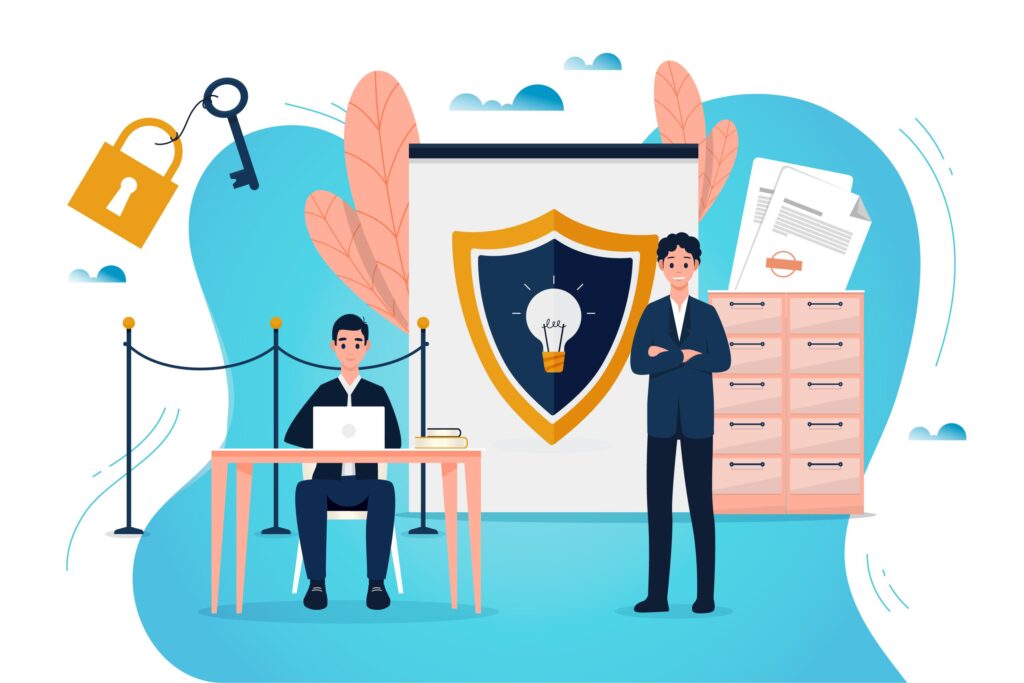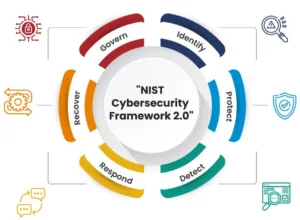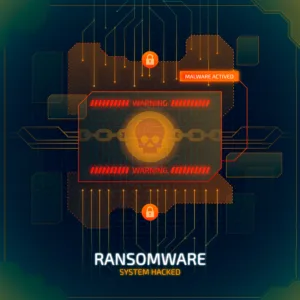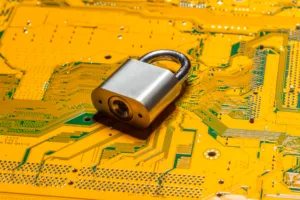
Table of Contents
Why Zero Trust Security
The growing need for robust security measures stems from several factors in today’s interconnected and digital world. These factors include:
- Increasing cyber threats: The threat landscape is continuously evolving, with cybercriminals becoming more sophisticated and organized. They target individuals, businesses, and even governments, seeking financial gain, access to sensitive information, or disruption of critical infrastructure. As technology advances, so do the tools and techniques employed by hackers, necessitating stronger security measures.
- Rising dependency on technology: Our society has become heavily reliant on technology, with interconnected systems and devices playing a significant role in various aspects of our lives. This dependence introduces vulnerabilities that can be exploited by malicious actors. From online banking to healthcare systems, transportation networks to smart homes, the security of these systems is crucial to protect sensitive data and ensure the smooth functioning of essential services.
- Proliferation of data: The amount of data generated and stored is growing exponentially. This includes personal information, financial records, intellectual property, and more. Protecting this data from unauthorized access or misuse is critical to maintain privacy, prevent identity theft, and safeguard business interests. Robust security measures are needed to ensure data confidentiality, integrity, and availability.
- Regulatory requirements: Governments and regulatory bodies have recognized the importance of cybersecurity and data protection. As a result, they have implemented stringent regulations and compliance standards to safeguard sensitive information and mitigate risks. Organizations must adhere to these regulations to avoid legal consequences, financial penalties, reputational damage, and loss of customer trust.
- Advanced persistent threats: Sophisticated and persistent attacks, often referred to as advanced persistent threats (APTs), are a significant concern for organizations. APTs involve well-funded and highly skilled adversaries who can infiltrate systems, remain undetected for extended periods, and carry out stealthy attacks. Protecting against APTs requires robust security measures that include proactive threat detection, incident response capabilities, and continuous monitoring.
- Internet of Things (IoT) vulnerabilities: The proliferation of IoT devices, such as smart home devices, connected cars, and industrial control systems, introduces additional security challenges. Many IoT devices have weak security controls, making them attractive targets for hackers. Compromised IoT devices can be used to launch larger attacks or gain unauthorized access to networks. Implementing strong security measures for IoT devices is crucial to prevent potential disruptions and protect user privacy.
Definition and core principles of Zero Trust Security
Zero trust security is a security framework and concept that challenges the traditional perimeter-based approach to network security. It operates on the principle of “trust no one, verify everything” and assumes that no user or device should be inherently trusted, even if they are within the network perimeter. Instead, zero trust security emphasizes continuous verification and validation of user identities, devices, and network connections before granting access to resources.
In a zero trust security model, several key principles are followed:
- Identity-based access: Rather than relying solely on network location or IP addresses, zero trust security focuses on user identity as a crucial factor in determining access privileges. Every user and device must be authenticated and authorized before accessing resources.
- Least privilege access: Zero trust security follows the principle of granting users the minimum level of access required to perform their tasks. Access rights are based on the user’s role, job function, and specific needs, limiting potential damage in case of a security breach.
- Continuous monitoring and analytics: Zero trust security employs continuous monitoring and analysis of user behavior, network traffic, and device health to detect anomalies and potential threats in real-time. This enables swift response and remediation.
- Micro-segmentation: Network segmentation is a key component of zero trust security. It involves dividing the network into smaller, isolated segments or micro-perimeters, with strict controls and policies governing the flow of traffic between these segments. This containment helps to limit lateral movement by attackers.
- Multi-factor authentication (MFA): Zero trust security emphasizes the use of multiple authentication factors to verify user identities. This typically includes a combination of something the user knows (e.g., password), something the user has (e.g., a smart card or token), and something the user is (e.g., biometric data).
- Encryption and data protection: Zero trust security emphasizes the use of strong encryption mechanisms to protect data both in transit and at rest. This ensures that even if data is intercepted or stolen, it remains unreadable and unusable to unauthorized individuals.
Contrasting zero trust with traditional perimeter-based security model’s
| Controls | Traditional Security | Zero Trust Security |
| Trust assumption | It assumes that devices and users within the network perimeter are trusted and allowed access to network resources by default. There is a reliance on the network perimeter as the primary line of defense. | It assumes that no user or device should be inherently trusted, regardless of their location within the network. Access to resources is not granted based on network location alone, but is continuously verified based on user identity, device health, and other contextual factors. |
| Network perimeter | The traditional model places a significant emphasis on securing the network perimeter using firewalls, Intrusion Detection Systems (IDS), and Virtual Private Networks (VPNs). The focus is on preventing unauthorized access from external sources. | Zero trust security de-emphasizes the network perimeter and assumes that it cannot be completely trusted. Instead, it focuses on securing individual devices, user identities, and the data itself, regardless of their location or network boundaries. |
| Access control | In the traditional model, once a user is inside the network perimeter, they often have broad access privileges to resources within the network. Trust is granted based on the user’s location within the network. | Zero trust security enforces the principle of least privilege, granting users access only to the specific resources they need to perform their tasks. Access is based on continuous verification of user identities, device integrity, and other contextual factors, regardless of the user’s location. |
| Network segmentation | Traditional models typically rely on a flat network architecture where all devices within the network have similar access privileges. Segmentation is often limited to separate networks for different departments or business units. | Zero trust security promotes micro-segmentation, dividing the network into smaller, isolated segments or micro-perimeters. Each segment has its own access controls and policies, restricting lateral movement within the network and containing potential threats. |
| Authentication | Traditional models commonly rely on single-factor authentication, such as a username and password, for accessing network resources. | Zero trust security emphasizes the use of multi-factor authentication (MFA) to verify user identities. This includes combining multiple factors, such as passwords, biometrics, tokens, or smart cards, to provide stronger authentication. |
| Monitoring and response | Traditional models often focus on monitoring network traffic at the perimeter for detecting and preventing external threats. Response mechanisms are primarily reactive in nature. | Zero trust security emphasizes continuous monitoring and analysis of user behavior, device health, and network traffic throughout the network. Anomalies and potential threats are detected in real-time, allowing for proactive response and remediation. |
Key Components of Zero Trust Security
Zero trust security is composed of several key components that work together to enforce the “trust no one, verify everything” principle. These components help establish a comprehensive security framework that can be applied across different layers of an organization’s infrastructure.
The key components of zero trust security include:
1. Identity and access management (IAM): IAM is at the core of zero trust security. It involves establishing strong user authentication mechanisms, implementing multi-factor authentication (MFA), and managing user identities and access privileges based on the principle of least privilege. IAM ensures that only authorized users and devices can access resources and data.
2. Device identification and security: Zero trust security emphasizes verifying the integrity and security posture of devices before granting access. This involves device identification, ensuring that devices meet security standards, and enforcing security policies such as software patching, encryption, and endpoint protection. Continuous monitoring of devices helps detect and respond to any potential threats or vulnerabilities.
3. Network segmentation: Network segmentation divides the network into smaller, isolated segments or micro-perimeters. This restricts the lateral movement of threats within the network, limiting the potential impact of a security breach. Each segment has its own access controls and policies, allowing organizations to define granular security boundaries.
4. Contextual awareness and adaptive controls: Zero trust security considers contextual factors such as user behaviour, location, time of access, and device health to determine the appropriate level of access. Adaptive controls dynamically adjust access privileges based on real-time context, allowing organizations to respond to changing risk levels and potential threats.
5. Continuous monitoring and analytics: Zero trust security relies on continuous monitoring and analysis of user behavior, network traffic, and system logs. This enables the detection of anomalies, suspicious activities, and potential security incidents in real-time. Monitoring and analytics help organizations respond promptly and take necessary actions to mitigate risks.
6. Secure access protocols and encryption: Zero trust security promotes the use of secure access protocols, such as Secure Shell (SSH) or Virtual Private Networks (VPNs), to protect data in transit. Additionally, strong encryption mechanisms are employed to secure data at rest, ensuring confidentiality and integrity even if the data is compromised.
7. Security orchestration and automation: Zero trust security leverages security orchestration and automation tools to streamline security operations. Automated processes help enforce consistent security policies, handle routine tasks, and respond quickly to security incidents, reducing the risk of human error and improving overall efficiency.
8. User education and awareness: Users play a critical role in zero trust security. Educating and raising awareness among users about security best practices, social engineering threats, and the importance of adhering to security policies is essential. This helps prevent common security pitfalls and promotes a security-conscious culture within the organization.
By integrating these components into their security architecture, organizations can establish a robust zero trust security model that provides granular access controls, continuous monitoring, adaptive security measures, and strong protection for their critical assets and resources.
Benefits of Zero Trust Security
Implementing a zero trust security model offers several benefits to organizations, addressing the evolving threat landscape and enhancing overall security posture.
The key benefits of zero trust security include:
1. Improved security posture: Zero trust security significantly enhances an organization’s security posture by challenging the assumption of trust and implementing continuous verification and validation of user identities, devices, and network connections. This proactive approach helps to mitigate the risk of unauthorized access, data breaches, and insider threats.
2. Enhanced data protection: Zero trust security focuses on protecting data at every stage, from access to transmission and storage. By enforcing strong access controls, encryption, and segmentation, zero trust security minimizes the risk of data breaches, unauthorized access, and data exfiltration. It helps organizations comply with data protection regulations and safeguards sensitive information.
3. Reduced attack surface: The micro-segmentation aspect of zero trust security reduces the attack surface by dividing the network into smaller, isolated segments or micro-perimeters. This containment limits lateral movement for potential threats and prevents the spread of malware or unauthorized access across the network. Attackers face significant challenges in navigating and escalating privileges within a zero trust environment.
4. Better visibility and monitoring: Zero trust security emphasizes continuous monitoring, real-time analysis, and contextual awareness. Organizations gain better visibility into network traffic, user behavior, and device health, allowing for the timely detection of anomalies and potential security incidents. Enhanced monitoring capabilities enable proactive threat response and remediation.
5. Stronger access controls: Zero trust security employs strong authentication mechanisms, such as multi-factor authentication (MFA), and enforces the principle of least privilege. This ensures that users and devices are granted only the necessary access privileges based on their identity and contextual factors. Granular access controls minimize the risk of unauthorized access and limit the impact of compromised credentials.
6. Flexibility and scalability: Zero trust security can adapt to evolving organizational needs and changing network landscapes. The model accommodates dynamic environments, cloud-based applications, remote work scenarios, and the increasing use of mobile devices. It provides the flexibility to enforce consistent security policies regardless of the user’s location or the network they are accessing.
7. Compliance and regulatory alignment: Zero trust security aligns with many regulatory frameworks and compliance requirements, such as the General Data Protection Regulation (GDPR) and Payment Card Industry Data Security Standard (PCI DSS). Implementing a zero trust model helps organizations meet data protection and privacy obligations, reducing the risk of non-compliance and associated penalties.
8. Business resilience: By implementing zero trust security measures, organizations can mitigate risks, respond quickly to security incidents, and minimize the impact of potential breaches. This enhances overall business resilience, reduces downtime, protects brand reputation, and instills customer and stakeholder confidence in the organization’s security practices.
In summary, zero trust security offers organizations improved security, enhanced data protection, reduced attack surface, better visibility, stronger access controls, flexibility, regulatory compliance, and increased business resilience. By adopting a zero trust approach, organizations can better defend against emerging threats and establish a comprehensive security framework for their digital assets and resources.
Do follow on “https://cybertechworld.co.in” for more such insightful cybersecurity content.




















Hi, this is a comment.
To get started with moderating, editing, and deleting comments, please visit the Comments screen in the dashboard.
Commenter avatars come from Gravatar.
Your article helped me a lot, is there any more related content? Thanks!